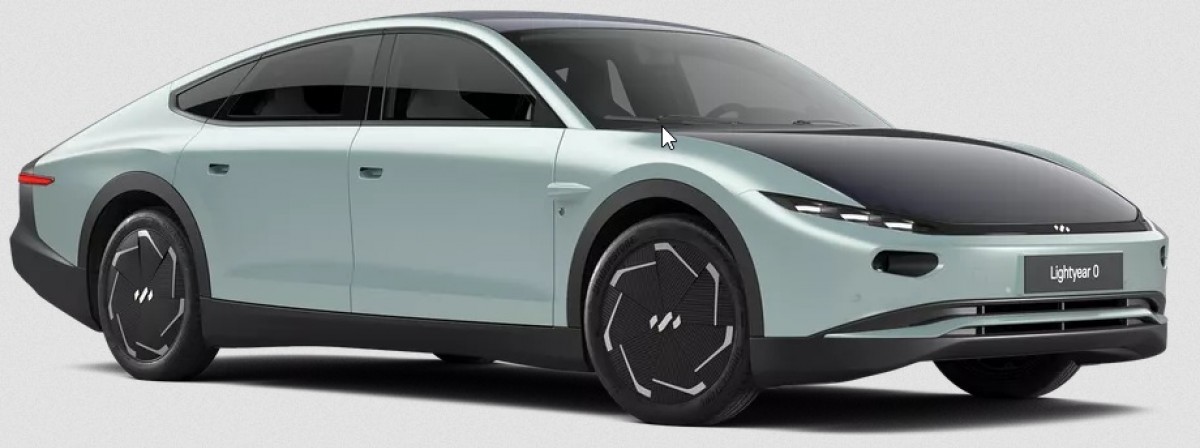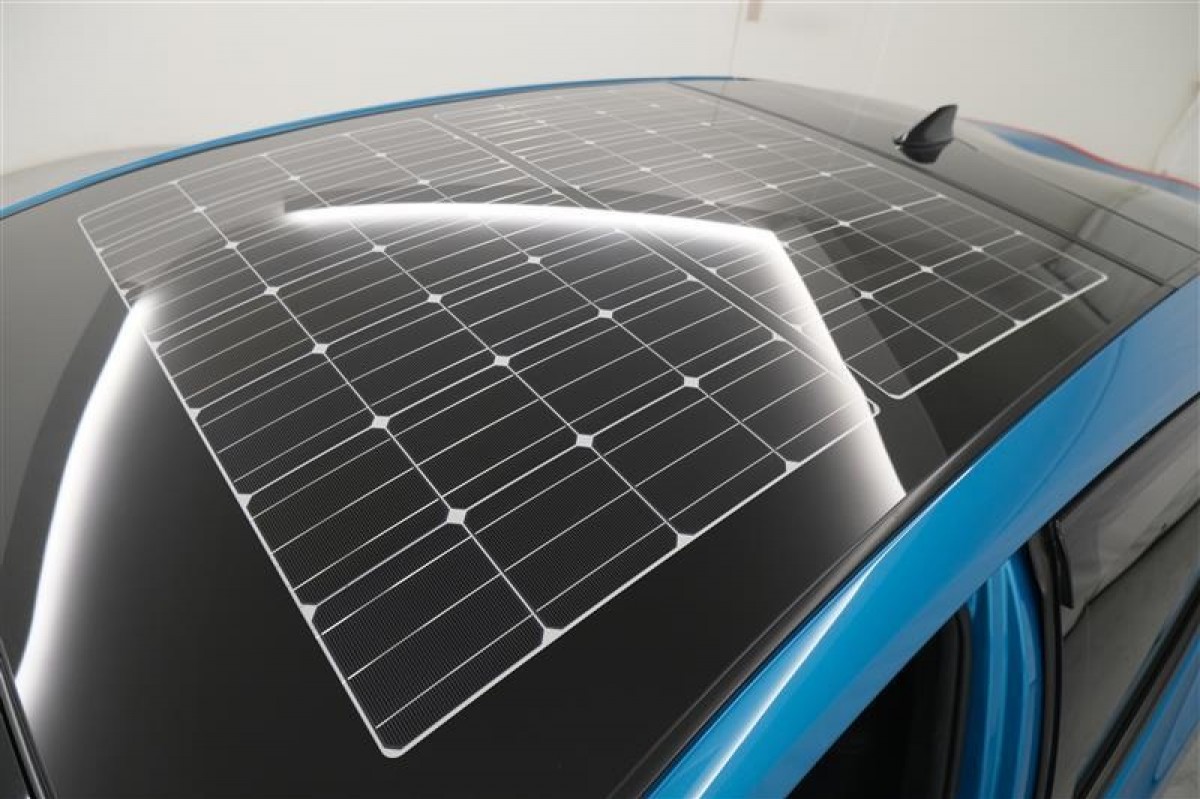Why solar panels on cars make no sense (at this point)
Several makers have already toyed with equipping their EVs with solar panels. And at first, it makes sense. As your car sits idling, you get extra range for free. Plus, it's clean energy, which is good for the environment, too. Plus, there's the added convenience of fewer trips to the charger - what's not to like? A lot, actually, and it appears the moment you scratch the surface. Let's take a look!
Important notes on the work of solar panels
We will not bother you with too many technicalities here, but we need to make a couple of important points about the practical side of having a solar panel on your roof. Panels have nominal power output often marked in the non-SI unit watt-peak (Wp). Which is the output the panel will generate if it's fully exposed to the sun and at optimal temperature.
However, you will usually get a partial output even in bright sun as the temperature will affect that. Every solar panel has a temperature coefficient (in the 0.2%-0.5%) range, indicating the expected output loss for each degree over 25°C. Considering that a panel exposed to direct summer sun in southern Europe can reach beyond 65°C, it adds up to 8-20% degradation.
Another factor to consider is that solar panels really hate shade - cells in a solar panel are typically connected in a series. So even if just half of a cell of a 36-cell panel is shaded (so just under 1.5% of its working area), the output of the entire panel drops by half. The shaded cell will bring the other down to its level and you will not get the promised output.

And shading just one entire row of the panel would reduce its output to zero more often than not. You can add more series within the panel to alleviate this, but it will bring little results as shading typically occurs in entire rows or columns.
It gets worse too - if all panels are connected to the same inverter, as would be the case if carmakers want to keep wiring complexity and price in check, having one panel underperform drops the output of the entire array.
These are significant concerns and people that install roof solar systems spend a lot of time planning to avoid them. Panels are installed in locations and at angles to avoid shading as much as possible, but when you have the panel on your car, you have none of that luxury. Cars are parked on roads, next to buildings and other taller cars, which means that the vast majority of panels on them will produce next to zero electricity the vast majority of the time.
That said, let's move to the main points.
It’s anything but free
A simple solar roof offered by Hyundai on certain models and Toyota on the Prius would cost upwards of €1,500, sometimes even over €2,500 as an option depending on the market. They would have a nominal power of 204Wp on the Hyundai and 60Wp on the latest Prius. That last one is so underpowered that it doesn't even attempt to charge the battery, but merely runs some of the car's systems when possible.

The guys over at Global Solar Atlas have put together a great map that gives you the expected annual yield of a solar panel, depending on its location. In Gibraltar you'd get about 1,550Wh for 1Wp of installed solar panels if you've angled them optimally at 30°. Laying them flat as they would be on a car's panels drops that to 1,400Wh. In London that number stands at 820Wh. And those numbers don't account for the loss to shading.
So under optimal conditions the Hyundai solar roof would yield 280kWh yearly. In London you'd get 164kWh. That’s without counting the extra power needed to cool the cabin since you’ve obviously parked it in the brightest sun, instead of a cooler shadier spot.
Even at commercial charging stations rates of €0.50/KWh you'd need 10 to 20 years just to break even before you count all the other factors that will reduce the output.
And that’s not factoring in the inefficiencies between the panel output and the battery charger, the degradation of the panel or cases when charging is impossible due to the battery already being full, although admittedly both of those contribute single percentage points. Still, it’s no wonder Hyundai has discontinued the option in most markets.
To take another example - the ill-fated Lightyear 0 has more panels and even if the company never disclosed the output of the panels the numbers it has shared allow us to calculate it. Lightyear estimates an extra yield of 11,000km in Southern Spain,based on the 625km WLTP range and the 60kW battery.
So the company expects you to get 1,056kW of power if you always opt for the middle of that giant car park away from any pesky shadows. Or about €528 worth of savings. Move to Glasgow and your savings are down to €265. Not bad, considering that you were supposed to be getting a €250,000 car with no rear window.

Obviously, Lightyear says the 2 will be far cheaper, while Sonos is even testing production of its €40,000 solar car, but as the company already proved promises are one thing and delivering an actual worthy vehicle to the road an entirely different. So while I’m open to being proven wrong I doubt it will happen in the next decade.
It’s not environmentally-friendly
Sure it’s costing you more than it’s putting back in the battery but having the solar roof generate cleanest energy possible is helping the environment right? Sadly, things are once more not that simple.
Solar energy adoption is accelerating at an unprecedented pace and the most limiting factor is actually the supply side - we just can’t make solar panels fast enough. And in a supply-limited market it makes more sense to leave production capacity for the solar farms where panels will be placed in a way to maximize their output instead of wasting them on cars where they’ll be idling most of the time.
Worse yet, the smaller the installation, the higher the overhead as you can’t use economy of scale to offset wiring and inverter costs and you end up increasing the carbon footprint per Wh.
Convenience is doubtful
Now convenience is obviously a strictly personal matter, but solar panels are certainly not a one-way street when it comes to that. For starters, the looks of the solar panels aren’t as great as the sleek roof most cars come with these days. But obviously you don’t look at your car’s roof very often so that’s no biggie.
How about parking then - you surely park your car frequently. So now you’ll have to carefully consider where you park your car if you want to even come close to maximizing the limited power output potential.

You’ll also need to be washing your car religiously as dust and dirt will severely impact the efficiency of the panel. If you are getting regular snowfall you’d need to be extra careful to fully clean any surface that you’d be hoping will generate any electricity.
And speaking of winter conditions, we have to repeat that even if you do your best the output in the winter when EVs are most range-limited, will be only a third from what you get in the summer. So even under ideal conditions a Ioniq 5 will get about 1.5 kilometers of extra range per day in the winter.
You like having sunroofs and feel of extra spaciousness that it provides? Sorry, that doesn’t mix with a solar panel. Roof rails are also a no-go and no rooftop boxes, obviously.
Then there’s the matter of repairability - having to repaint your car is usually a routine operation that a number of official and third party repair shops can do for you. Having to replace a solar panel, which is far more fragile to begin with, is a far more complicated procedure. And the rarity of those would make finding the parts a challenge.
Not to mention that on the Lightyear 2 you will have to live without a rear windows, while the Sonos Sion has it drastically reduced. If either of those ever comes to the market, of course.
What to do instead
You can build a small installation for your house for the cost of a Hyundai solar roof that will generate much more green electricity, not to mention it will be easier to maintain and will last much longer. And if you are dead set on putting some homemade solar power in your car you can still do that.
Upgrading your home charging station may net you faster charging rates. Or you can look at improving your car efficiency by getting a new set of tires or different wheels.
Depending on where you live you can opt to buy more of your electricity from renewable sources. The money saved from the needless car option will last you until these no longer command a price premium.
And one day when panels have improved, we've completed all the major projects and supply has finally caught up with demand we can perhaps reconsider and start putting them on cars. But that's decades away.
Reader comments
- S
- xjH
Someone should build SOLAR CAP. Which will charge our body. We eat food for energy. So, SOLAR CAP will give us ENERGY DIRECTLY accumulated from SUN.





Facebook
Twitter
Instagram
RSS
Settings
Log in I forgot my password Sign up